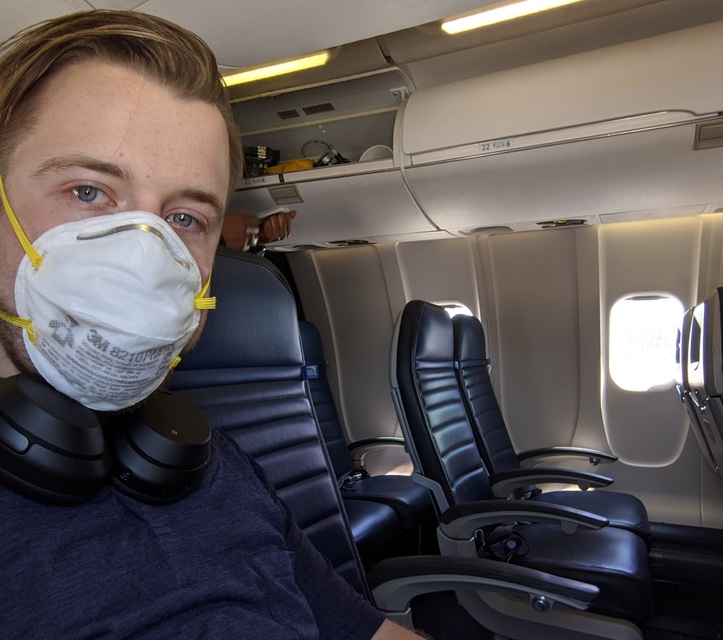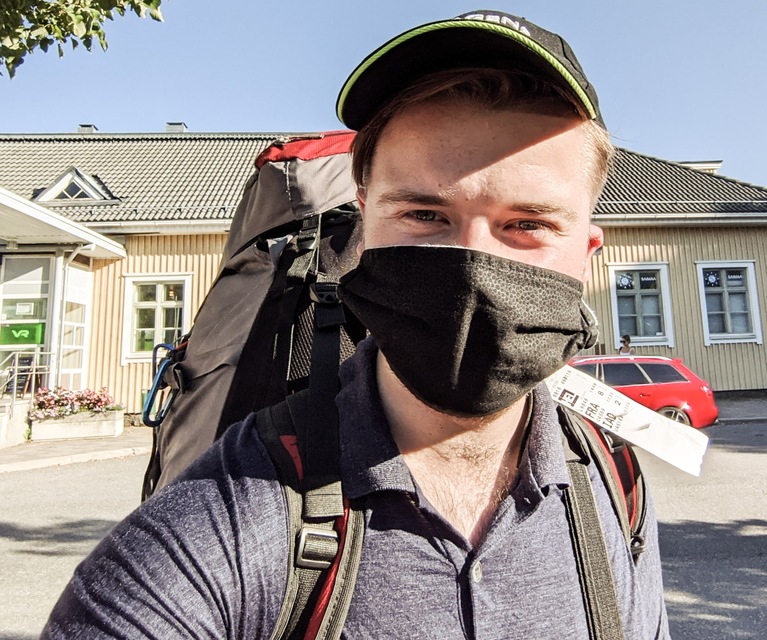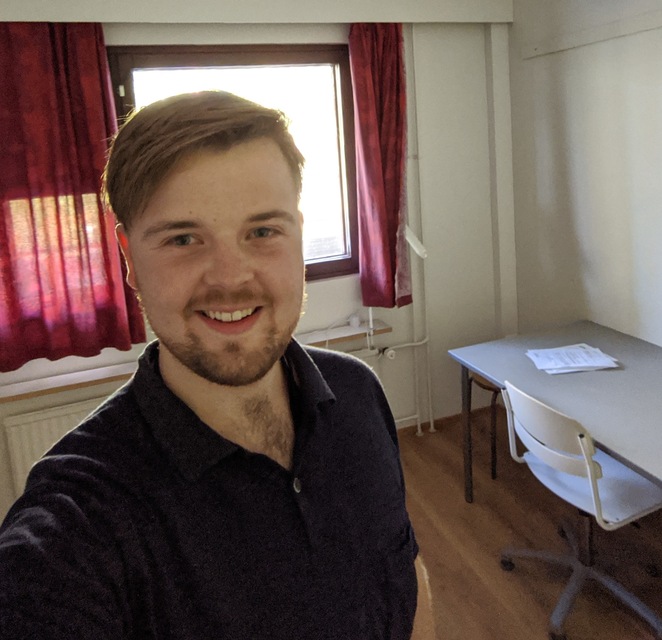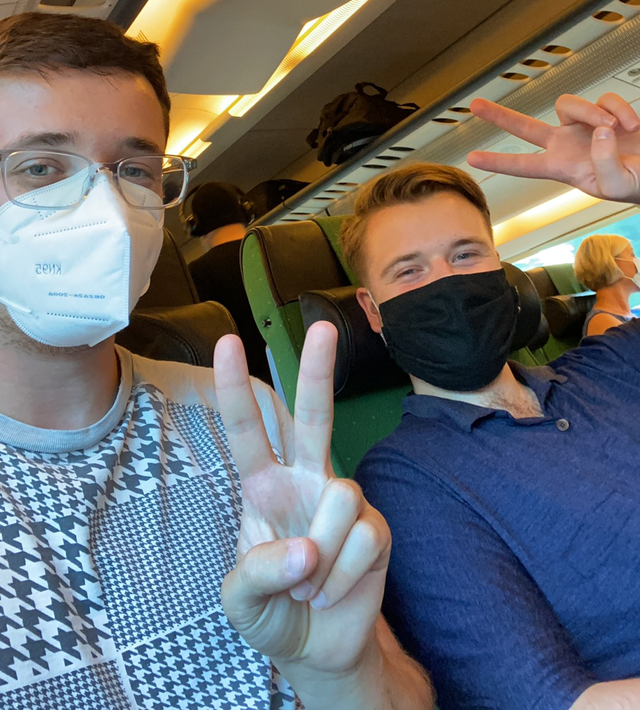Some know Finland as the happiest country on earth. Some know Finland as an untamed arctic wilderness. For the past year and a half, I have known Finland as home.
Growing up in the U.S. with a Finnish mother and grandparents, I expected living in Finland to feel somewhat familiar. Instead, I experienced culture shock almost daily in the first few weeks after moving. While initially surprising, these moments have been critical keys to unlocking the secrets of nordic happiness. While reflecting on my experience acclimating to Finland, I have selected my top 5 culture shock moments to share with you.
1. Effective Public Transportation
As I opened the door of my family’s minivan, the sticky summer air surrounded me. It was August 2020; the pandemic induced lockdowns were in full force and travel prohibitions were changeing weekly. After travel had abruptly halted in March, I was the first to travel internationally again among my friends and family.
 An N95 mask and a row to myself on the first leg of the journey
An N95 mask and a row to myself on the first leg of the journey
A normally routine trip from my family home in the suburbs of St. Louis, Missouri to the airport was suddenly shrouded by the unknowns of the pandemic:
When would I see my family again?
What if I catch the virus while traveling?
After a family hug, I donned my mask and began my transcontinental journey. After four document checks, two layovers in Washington D.C. and Frankfurt, Germany, and wearing an N-95 mask continuously for over 24 hours, I arrived in Helsinki. Picking up my backpack and suitcase from baggage claim, I resembled a sherpa as I began walking towards the train station in the airport.
After a short ride on the commuter train to an unfamiliar train station, I scrambled up the escalator to make the 6 minute connection to the Inter-City train to Lappeenranta. I searched rapidly for the departure monitors. Locating my track number, I raced down the escalator and made it to the platform with 1 minute to spare. This would be the first of many journeys from Helsinki to Lappeenranta. I was shocked that I could take efficient public transportation from the capital of Finland to a small 70,000 person city in south-eastern Finland. I am studying a Master’s Degree in Mechatronic System Design as part of the Fulbright program there.
 Arriving at the Lappeenranta Train Station
Arriving at the Lappeenranta Train Station
Being from the midwest, it is difficult to travel anywhere without owning a car or having family or friends that do. Major urban centers like Chicago or Minneapolis have functional public transportation but outside urban hubs the choices are abysmal. Chicago is the closest international hub to me that offers direct service to Finland. Taking any long-distance public transportation always begins with a friend, family member, or taxi ride to the station 45 minutes downtown since there is no bus service in my area. The 5 hour drive from St. Louis to Chicago takes over 6 hours by Amtrack train and 8 hours by Greyhound bus.
Long distance public transportation in the U.S. is not competitive to driving or flying for most people. Route maps are significantly underdeveloped, travel times are significant longer, service is unreliable, and prices are not competitive. This has developed a stigma surrounding public transportation in the U.S. that has relegated its use to the desperate and destitute.
In the Midwest, living without a car is challenging. In Finland, living without a car is not only possible but pleasant. With intercity trains, long distance buses, and regional buses, it is possible to reach the most remote regions of Finland with only public transportation.
Intercity trains in Finland are all electric which has a significantly lower environmental impact than driving or flying. In the past 12 months, the national rail service of Finland (VR) app, has informed me that I have spent 64 hours on the train and saved over 600 Kg of CO2 emissions. In the U.S., public transportation is an afterthought used by people without another option. In Finland, public transportation is an efficient, sustainable, and cost-effective method everyone relies on to reach their destination.
2. No Air Conditioning
After receiving my keys and info packet from a university representative, I hailed a taxi with some friends I met during the journey. As the taxi driver began speaking rapid Finnish, I cobbled together enough from my childhood and language studies to make some broken small talk and navigate us to our destination a few kilometers away. Arriving at my new apartment and stepping through the threshold, I soaked in the sun streaming through my bedroom window.
 My air conditioning free student apartment
My air conditioning free student apartment
In Missouri, I do not know anyone who does not have air conditioning in their home. I was surprised when I entered my student flat in Finland and found radiators and no air conditioners in every room. Finland is rarely hot enough to warrant installing residential air conditioning.
Many of my European friends have a deeply rooted sense of pride in this abstention from air conditioning. While initially foreign to me, the lack of air conditioning has many wide-ranging benefits from lower building maintenance cost to decreased energy consumption.
I arrived during the hottest season of the year and even though some days were hot, it was not unbearable. While I was initially disappointed by the lack of air conditioning, it was a transformational moment. The surprise of not having air conditioning forced me to explore outside, swim in the lake, and take cold showers. This began my journey of embracing the motto of seeking uncomfort.
3. Unusual Business Hours
After discovering the lack of air conditioning in my shared flat, I examined my bare kitchen. Following a long day of travel, I was hungry and tired. After accepting the delivery of a used mattress I purchased from a previous Fulbright grantee online, I had a place to sleep that night.
To take care of food, I searched for a nearby store to buy kitchenware and groceries. I was surprised to discover that two retail conglomerates maintain a stronghold on the grocery market in Finland. S-Group and K-Group operate most grocery stores throughout Finland and their subsidiary brands sell everything from homes to cars.
I selected the next-door K-market and selected from their limited selection of produce, cleaning products, and kitchen supplies. Now that I had my necessities, I returned home around 7 P.M. and searched for a store to buy bedding. I was surprised to find that most specialty stores like this were already closed. My home goods purchases would have to wait for the next day.
Coming from the U.S. where 24-hour supercenters are plentiful, it was quite a shock to discover that there is only one 24-hour store in the entire city of Lappeenranta. Although acclimating to the reduced retail hours did not take long, I still struggle with commercial business operating hours.
Many businesses and government offices are open less than 10 hours per week. For example, it is not uncommon for a government office to have opening hours on Tuesday and Thursday from 9 A.M. to Noon. Phone customer service in English operates similarly. The customer service line for the Finnish Embassy of the U.S. for residence permit inquiries is open for roughly four cumulative hours each week.
While the opening hours of many establishments in Finland can be shocking, it has taught me valuable lessons about patience and planning. Dealing with Finnish bureaucratic or government agencies often takes months because of appointment scheduling and processing. Although these matters are usually not resolved in a timely manner, I have come to accept that.
Originally, I was upset at this slow pace of business, but I can now see some benefits. These limitations have made me understand the importance of time. If I am always available, the sanctity of my times becomes lost. Through the culture shock of the unusual Finnish business hours, I have become very intentional with how I schedule and use the limited time I have every day.
4. Respect of Rules
In the past 2 years, I have had first-hand experience with how various European countries and the U.S. approach COVID-19 in significantly different ways. These differences usually stem from deeply ingrained cultural values. In the U.S. rugged individualism is paramount and COVID-19 has become a politicized battle over what should be objective public health facts. Conversely, Finland and Finnish people have a much stronger collective mindset and deeply held reverence for rules and laws.
When deliberating rules and regulations, I usually consider the question:
“What are the consequences of breaking the rule?"
In Finland, the answer to this question is usually that breaking rules is bad and that is enough of a consequence. This highlights the importance of trust in Finnish society. There is an unwritten contract between people to uphold and abide by the rules even if there is no strict punishments or enforcement.
This mindset difference was especially apparent upon arrival in Finland. Many COVID restrictions were optional but strongly recommended. If they were mandatory there was usually not an associated punishment for non-compliance. Because of the lack of consequences, the rules became an ideological debate driven by belief in the validity of rules themselves. Coming from a culture where repercussions drive compliance, it was quite surprising to see rules and regulations followed for altruistic reasons.
5. Nudity
Growing up with a sauna in my grandparents home and studying abroad in Sweden, I was an experienced sauna-goer. What my grandparents sauna did not prepare me for was embracing nudity in the sauna.
In the U.S., nudity is hyper-sexualized through movies, advertisement, and culture. While studying abroad in Sweden in 2019, I attended a large mixed-gender sauna on the outskirts of Stockholm. Changing into a swimsuit in the locker room I carefully crossed the pool-tile floor towards the sauna. On the door I read the simple paper sign:
“No Swimsuits Allowed in the Sauna!”
Not wanting to be the only one wearing a bathing suit in the sauna, I removed it in favor of a towel. Opening the door of the 40-person sauna, I awkwardly looked for a place to sit. Most in the sauna were older couples or families unwinding after a long day of work. What intrigued me most was a group of 3 friends sitting a few seats from me. There were two boys and a girl around my age. I asked them if it was strange for them to see their friends naked. They said no, that they were used to this.
Because of restrictions in Finland when I arrived, reservations were required for the sauna. Soon after arrival, my new friends in the building invited me to my first sauna since arriving in Finland. Thinking back to my experience in Sweden I wondered what the dress code for this co-ed sauna would be, if any. After Sweden, I was shocked and a bit relieved when I walked in and everyone else was naked.
In Finland, nudity and the human body is a part of life. Sauna presents a unique opportunity for people to unwind and relax. Many find it strange to see close friends naked but it can help create a mindset around positive body image. Seeing people of all shapes and sizes solidifies the fact that everyone’s bodies are different. Nearly no one has the perfect supermodel bodies the media leads us to believe. Through this experience, I developed a more positive body image and a higher level of respect for differing body shapes and sizes.
Conclusion
 Meeting a new friend on the train to Lappeenranta
Meeting a new friend on the train to Lappeenranta
Life throughout the pandemic has been a roller coaster. Moving to a new country in the midst of it only magnifies the intensity. Starting in survival mode, it was difficult to understand the importance and lessons from these cultural moments. In reflection, I can see that these moments have come to define my experience and mindset in Finland. These moments created the spark for redefining certain guiding principles on how to live. I hope you can take the chance to reflect on the many memories and experiences that have become important lessons over the course of the pandemic. These moments and memories were just the beginning and I look forward to sharing the next steps of my journey with you!